A new report from the Australian National University has found that while the annual migrant intake is capped at 185,000, there are far fewer skilled migrants from overseas coming into Australia than intended.
The report shows that just 12% of places in the nation’s migration program are going to “genuinely new skilled arrivals from offshore”. Instead, many of these places are being allocated to members of skilled workers’ families.
The report has come from pro-Big Australia shills Peter McDonald and Alan Gamlen, who admit that Australia’s immigration system is broken:
“Australia’s migration programme has failed to deliver what it promises”, the authors say in their report.
“It brings in relatively few genuinely skilled workers, while favouring family migration”.
“It delivers few new skilled workers while being clogged with family visas that, by law, should not be capped at all”.
“The permanent intake is capped at 185,000 people per year, of which around 30% is earmarked for family visas. Even within the Skilled Stream, the majority of visas do not go to skilled workers but to their families”.
“Counting family and secondary applicants together, more than 60% of permanent visas are, in fact, family-related. Double the amount officially claimed”.
“Meanwhile, the share of genuinely new skilled arrivals from offshore is tiny, just 12% of the programme. The rest are already in Australia on temporary visas”, they say.
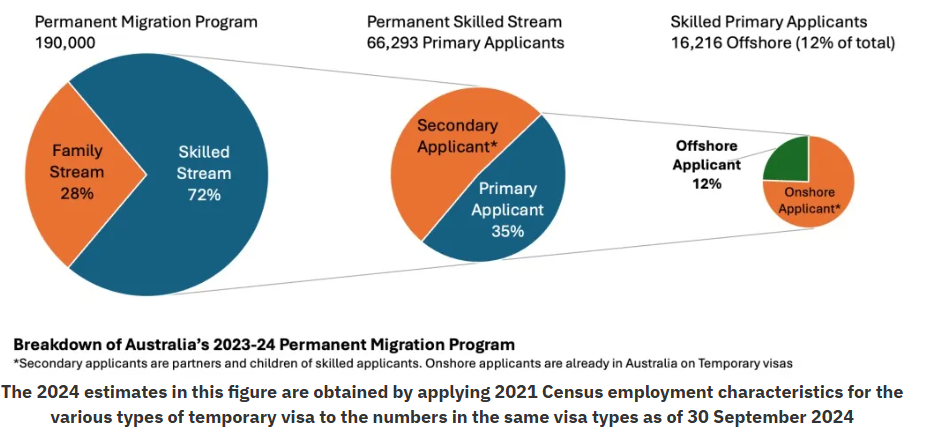
The authors conveniently failed to mention that Australia also imports 20,000 unskilled humanitarian migrants every year, adding to the problem.
I have made similar observations for years, noting that Australia is actually running an unskilled, low-productivity immigration system. The following chart from the Grattan Institute shows similar outcomes:
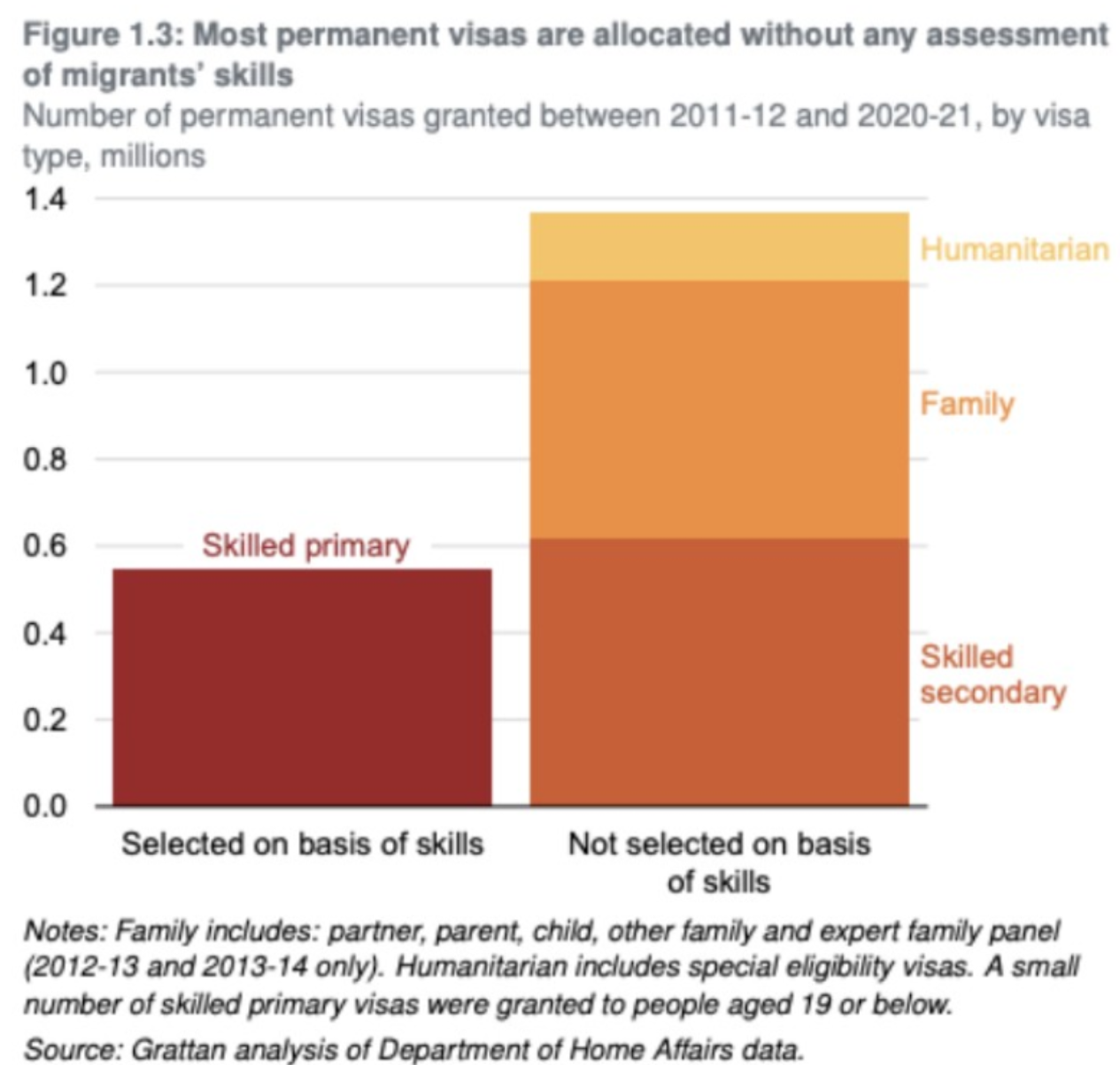
These unskilled migrants also have poor labour market outcomes:
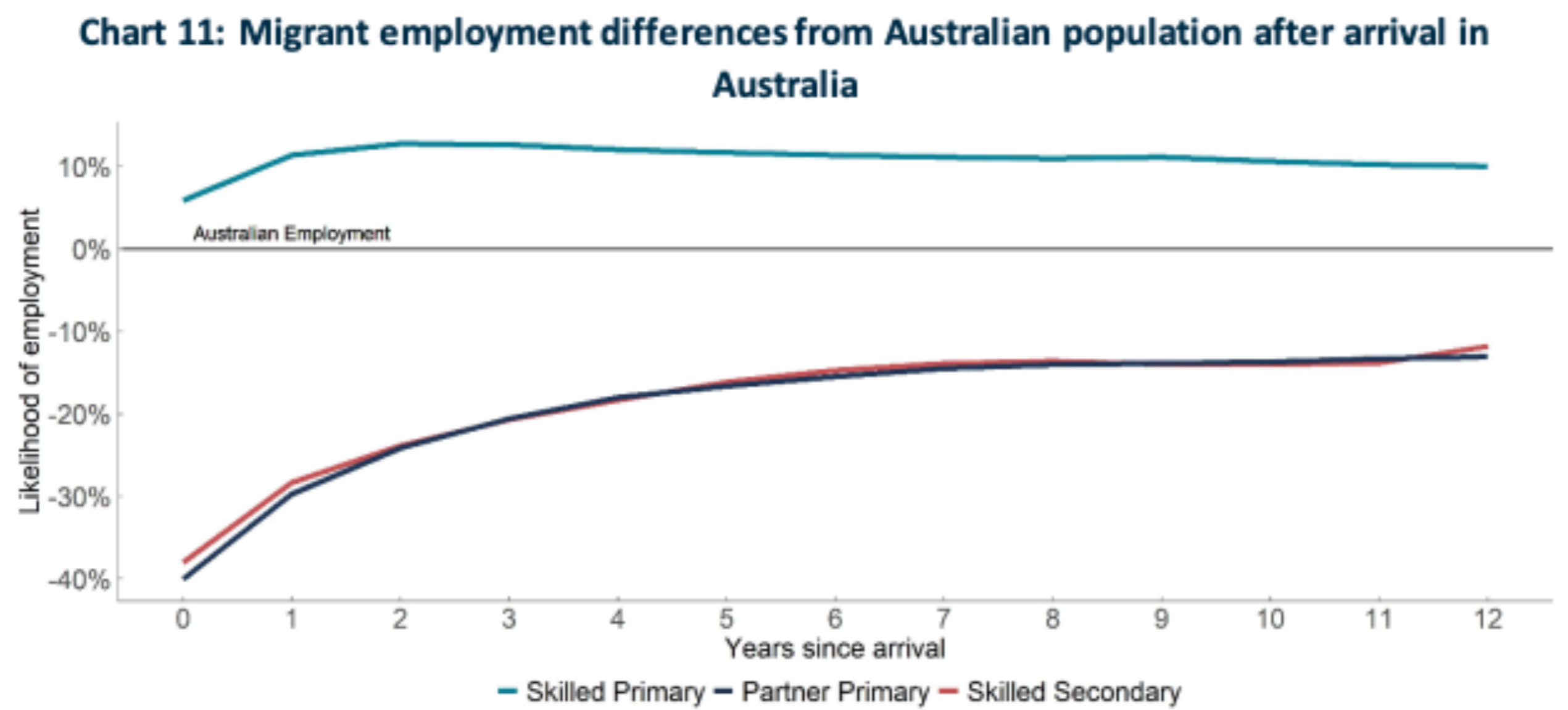
The Committee for Economic Development of Australia (CEDA) also studied the most recent census and discovered that Australia’s ‘skilled’ migrants are routinely underemployed and underpaid.
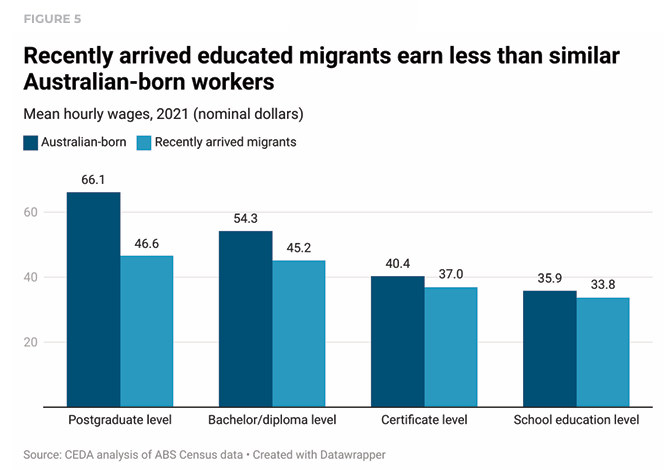
“Recent migrants earn significantly less than Australian-born workers, and this has worsened over time”, CEDA senior economist Andrew Barker said.
“This decade, migrants have become increasingly likely to work in lower productivity firms”.
Peter McDonald and Alan Gamlen then wrongly claim that the record number of temporary migrants in Australia are the real driver of skilled labour:
“Over the past three years, 84% of the increase in migrant skilled employment has come from temporary migrants, especially international students, graduates and working holiday makers. These groups now underpin growth in high-skill occupations such as managers, professionals, and trades”.
“The value of student and graduate temporary migration has been misrepresented”.
“Contrary to claims that they mostly end up in low-skill jobs, census data show that over half of graduate visa holders work in high-skill fields. Their partners also contribute strongly”.
Their claims are false.
The federal government’s 2023 Migration Review found that 51% of overseas-born university graduates with bachelor’s degrees were employed in unskilled jobs three years after graduation.
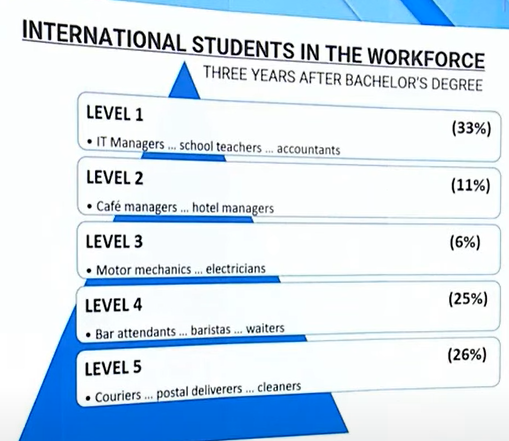
Source: Migration Review, 2023.
According to the Graduate Outcomes Survey, international graduates earn significantly less than domestic graduates and have inferior labour market outcomes.
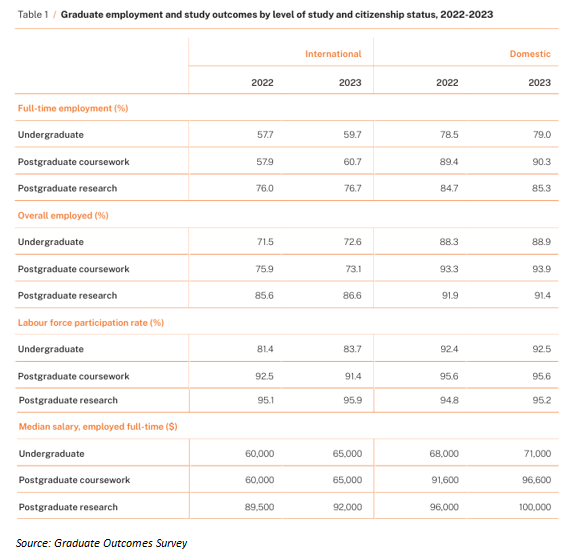
To their credit, the authors do at least admit that Australia’s immigration is worsening Australia’s housing and infrastructure shortages by lifting demand without adding to labour supply:
“In 2023-2024, the permanent programme delivered just 166 tradespeople, negligible against national needs. By contrast, more than 5,000 entered via the temporary skilled stream in 2024-2025”.
“Even this is insufficient to close the gap”.
Given that Peter McDonald and Alan Gamlen have admitted that Australia’s permanent migration system is largely unskilled, why do they constantly defend and promote Big Australia mass immigration?
Surely the sensible approach is to run a significantly smaller program that prioritises quality over quantity?
The wage floor for all skilled visas should be set at a higher level than the current median full-time salary of around $90,000. All skilled visas should be employer-sponsored, with eligible migrants required to work in their field of expertise straight away. Only primary skilled applicants should be considered.
All retirement visas, including parental and ‘golden’ tickets, must be abolished.
Entry standards and financial conditions for other temporary visas, such as student visas, should be significantly tightened to prioritise quality over quantity. Only exceptional overseas students should be granted post-study graduate visas.
Unfortunately, the Albanese government has chosen the opposite strategy, increasing the planning level for international students by 25,000 for 2026 while loosening English-language proficiency requirements.
As a result, the quality of Australia’s migration system will erode further, skills shortages will persist, and productivity growth and living standards will degrade.

